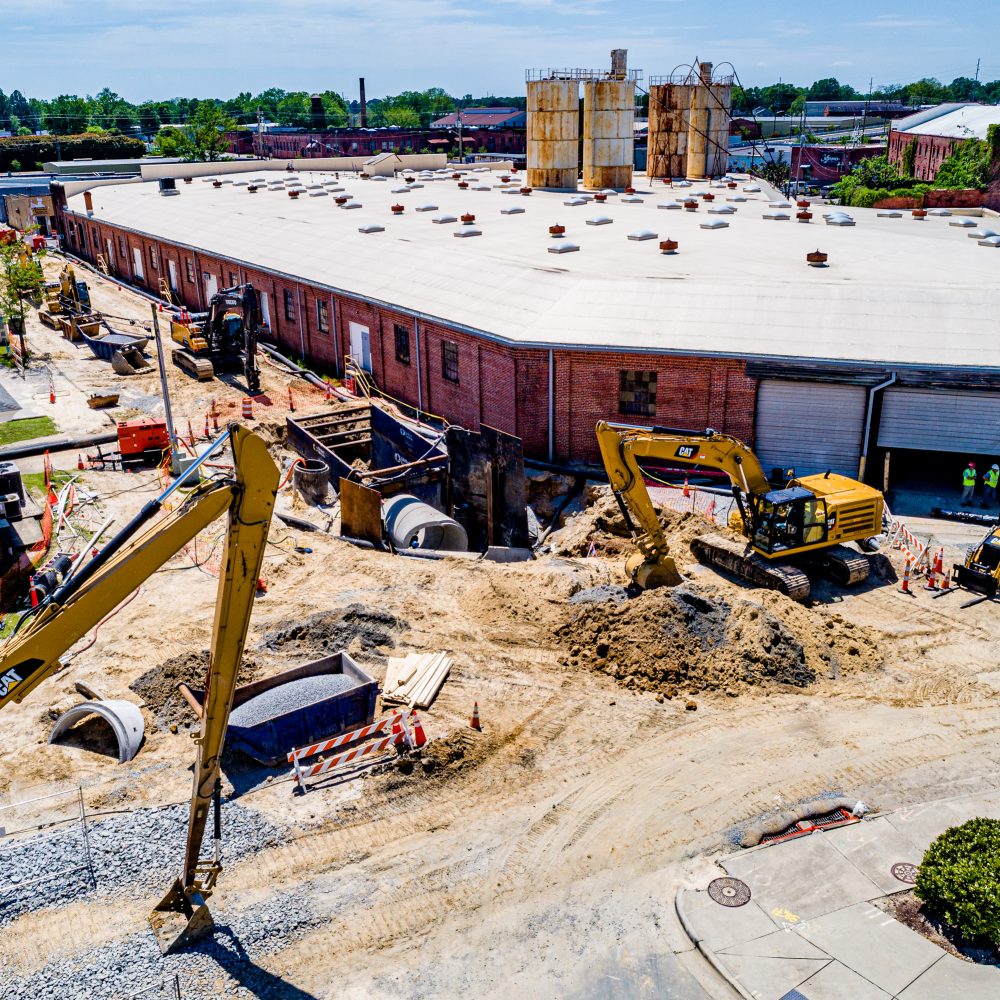Box Culvert Redesign Creates Efficiencies for Greenville, N.C.
As Greenville, N.C., began experiencing historic population growth in the early 2000s, the city faced a challenge common to many historic cities experiencing revitalization. The existing, aging stormwater infrastructure wasn’t suited to meet modern demands. One of the most significant issues with the city’s stormwater drainage occurred with the Town Creek Culvert Storm Drain, which is responsible for draining stormwater from approximately 250 acres downtown and in adjacent areas. A redesign from the initial twin line concrete pipe solution to a reinforced concrete box culvert design provided many benefits, including cost and footprint reductions as well as additional efficiencies.
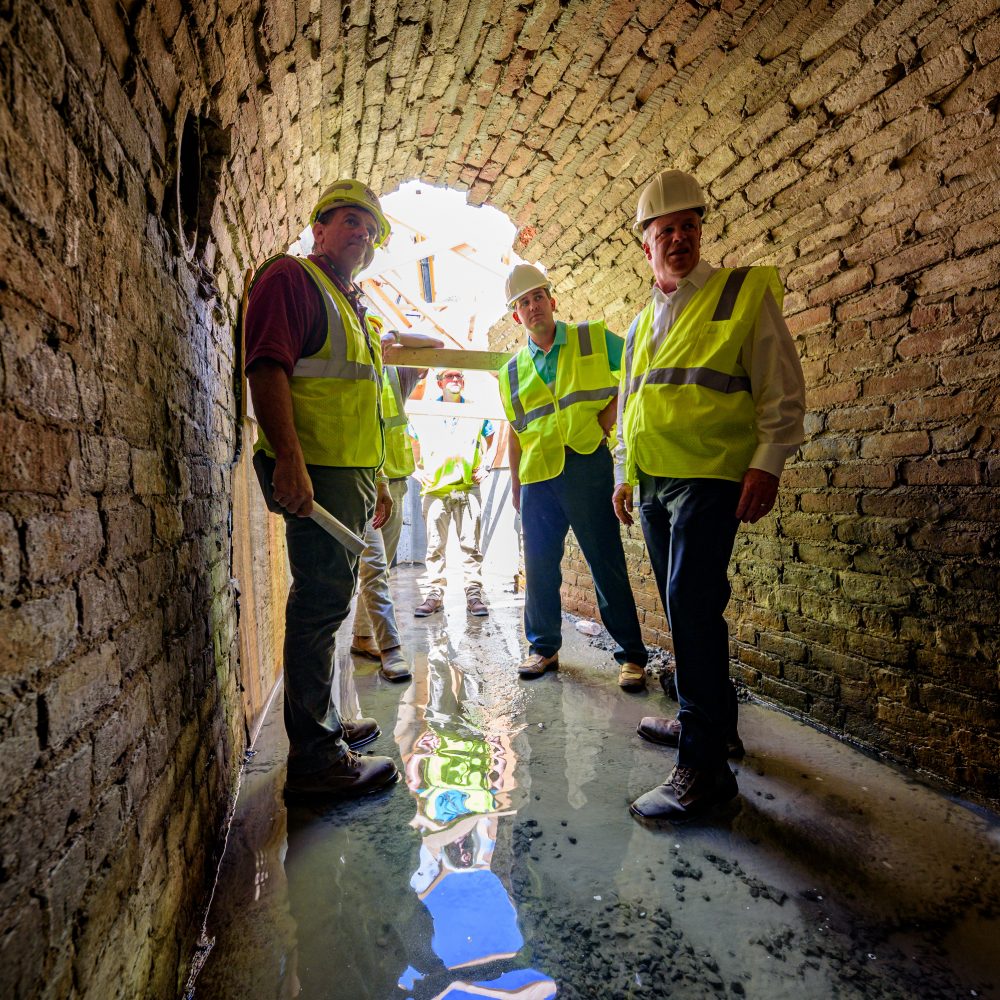
Originally constructed prior to 1935 in an existing creek bed, the Town Creek Culvert consisted of a 5’ by 5’ block arch design which needed increased capacity due to the new development in the area. According to the City of Greenville, pavement failures had become noticeable. What’s more, Greenville’s thriving downtown area in this eastern Carolina city experienced frequent flooding following many stormwater events. Hurricanes from the East Coast and even bad afternoon storms could cause mild to severe flooding ranging from 1” to 8” of water due to the culvert’s inadequate storm drain capacity. Flooding of the popular Uptown Greenville area threatened the city’s economic prosperity and growth.
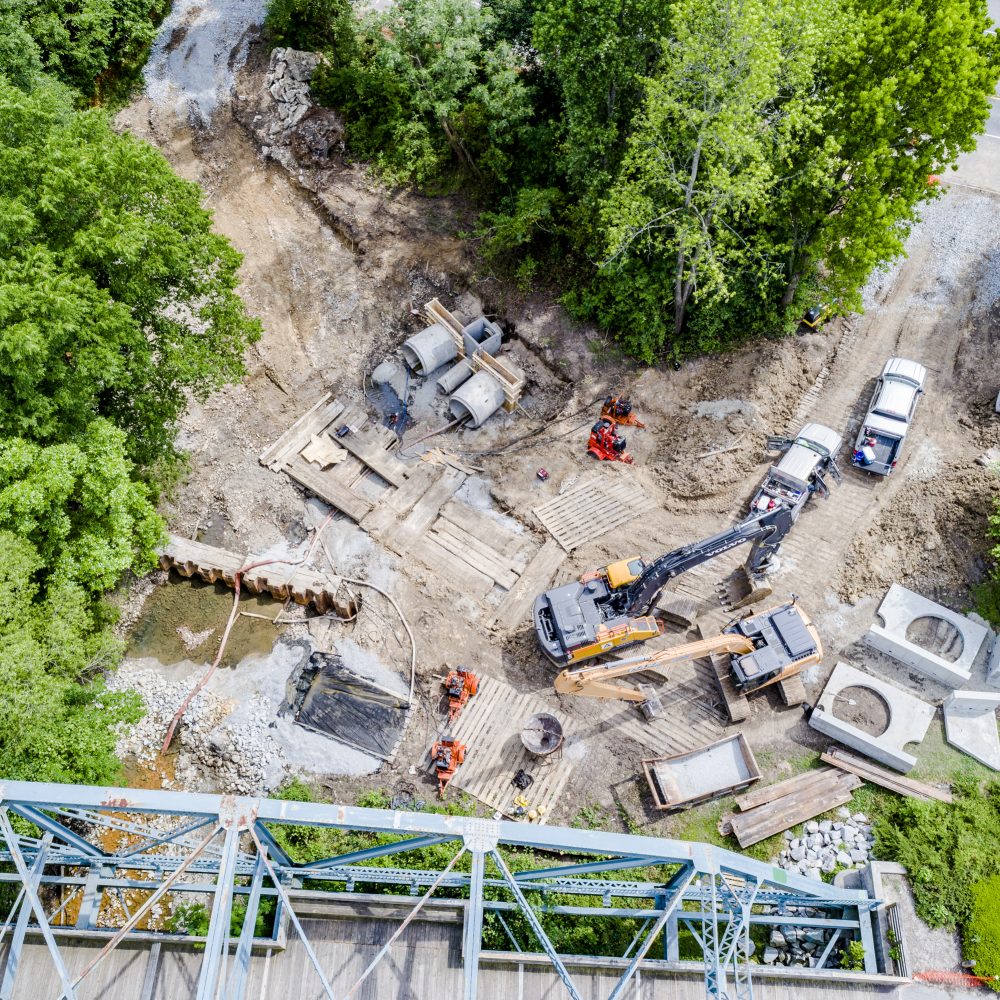
The driving force behind the project’s timing, however, was the North Carolina Department of Transportation (NCDOT) Tenth Street Connector Project that would direct stormwater from two other outfalls to the Town Creek Culvert. Subsequently, the Town Creek Culvert required an upgrade to handle the increased stormwater runoff from the NCDOT Tenth Street Connector project to protect Uptown Greenville.
Value Engineering Leads to Box Culvert Design
As the largest and most ambitious infrastructure project in Greenville’s history, funding for the Town Creek project was important to success. Funding was obtained through a low-interest low via the Clean Water State Revolving Fund (CWSRF) of North Carolina, which was established in 1987 by amendments to the Federal Clean Water Act. The loan was acquired under the initial design, and the project was fully funded. After the contractor was selected, discussions began about road closures and tight space conditions in a highly urban area.
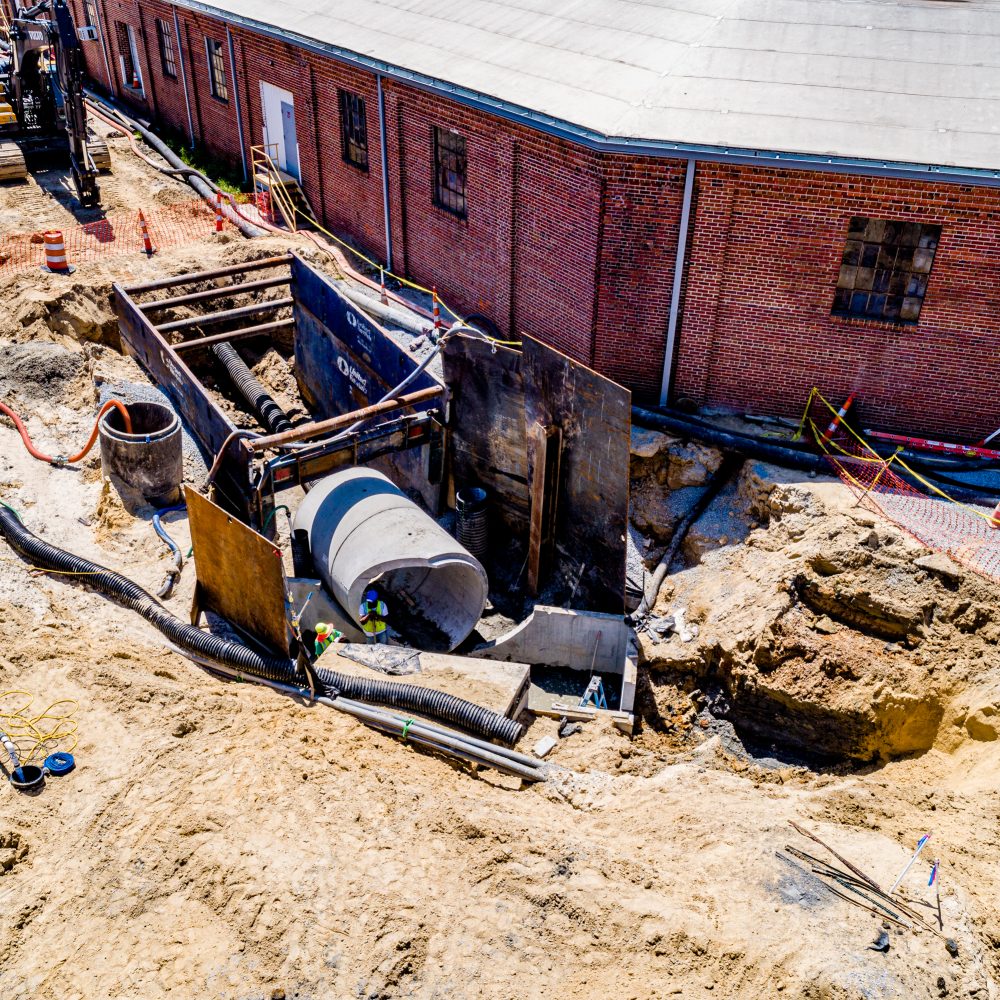
A redesign from the original plans for 2,400’ of twin 84” concrete pipe with approximately 15 junction boxes became necessary. Engineer of record, WK Dickson and stormwater engineer Kimley-Horn, both of Raleigh, N.C., worked with Oldcastle Infrastructure to determine a new solution which included a change from a twin line to a box culvert design.
Benefits of Box Culvert Redesign
Trader Construction of New Bern, N.C., began work on the storm drain replacement and rehabilitation project in March 2018. The project’s scope includes the construction of approximately 300 feet of one 84-inch diameter reinforced concrete pipe (RCP), 274 linear feet of 10- by 6-foot reinforced box culvert and approximately 2,000 feet of 10- by 8-foot reinforced box culvert installed at a depth of 25 feet. The entire storm drain is designed to convey naturally treated stormwater runoff before it is discharged into the Tar River.
The redesign to 10- by 8-foot reinforced box culverts reduced project costs, while providing additional benefits.
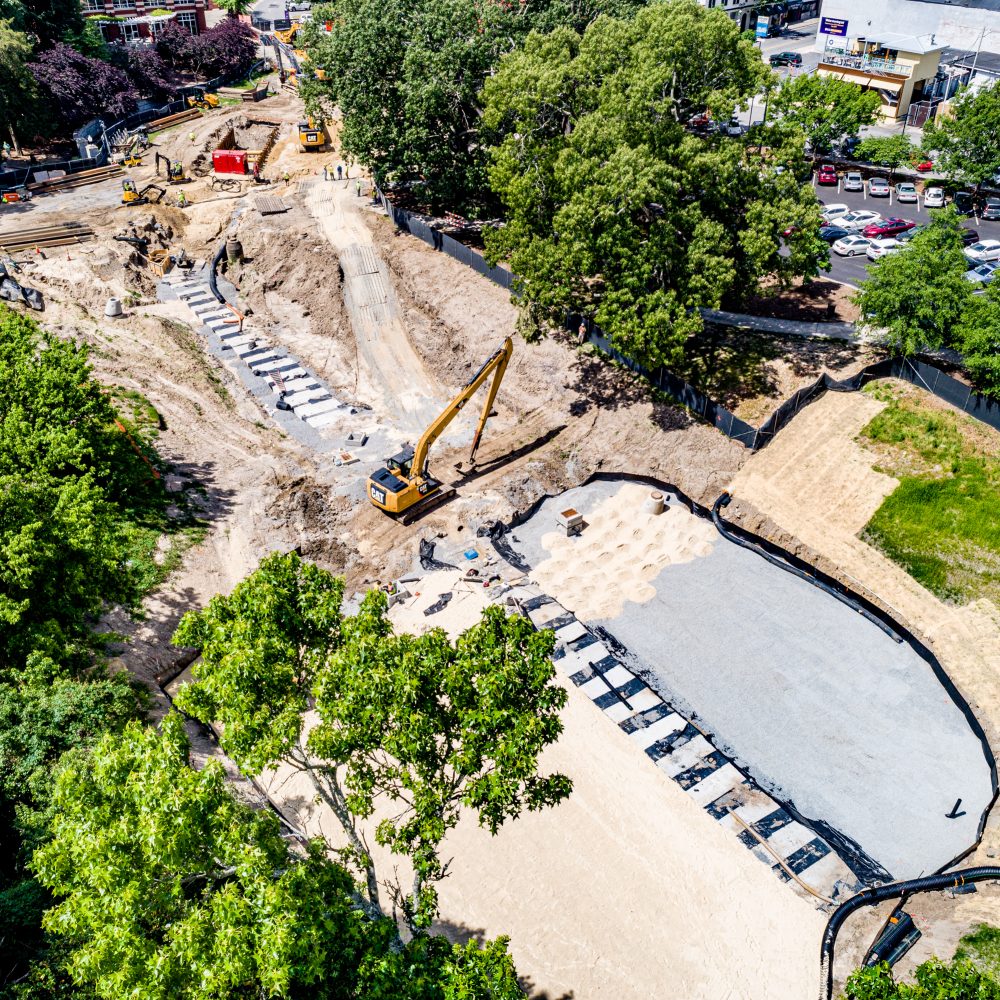
While the cost savings was great, the real driver in moving to the box culvert was the tight space conditions, installation time and more flexibility when dealing with conflicts,” says Lisa Kirby, engineer for the City of Greenville.
Value engineering to reinforced box culvert dramatically reduced the construction footprint, including the trenching and excavation area. Because the project runs through downtown Greenville directly underneath the middle of the city’s primary thoroughfares, reducing the excavation’s width was important to managing traffic flow as well as maintaining the economic activity in the existing shops, businesses and restaurants.
What’s more, 70 percent of the junction boxes were eliminated because the new box culvert design allowed for turns, bends and interceptors in the culvert itself. The change to a box culvert design allowed for secondary tie-ins directly into the culvert. The new design eliminated large junction boxes and allowed 50 percent of the catch basins to go directly into the top of the box.
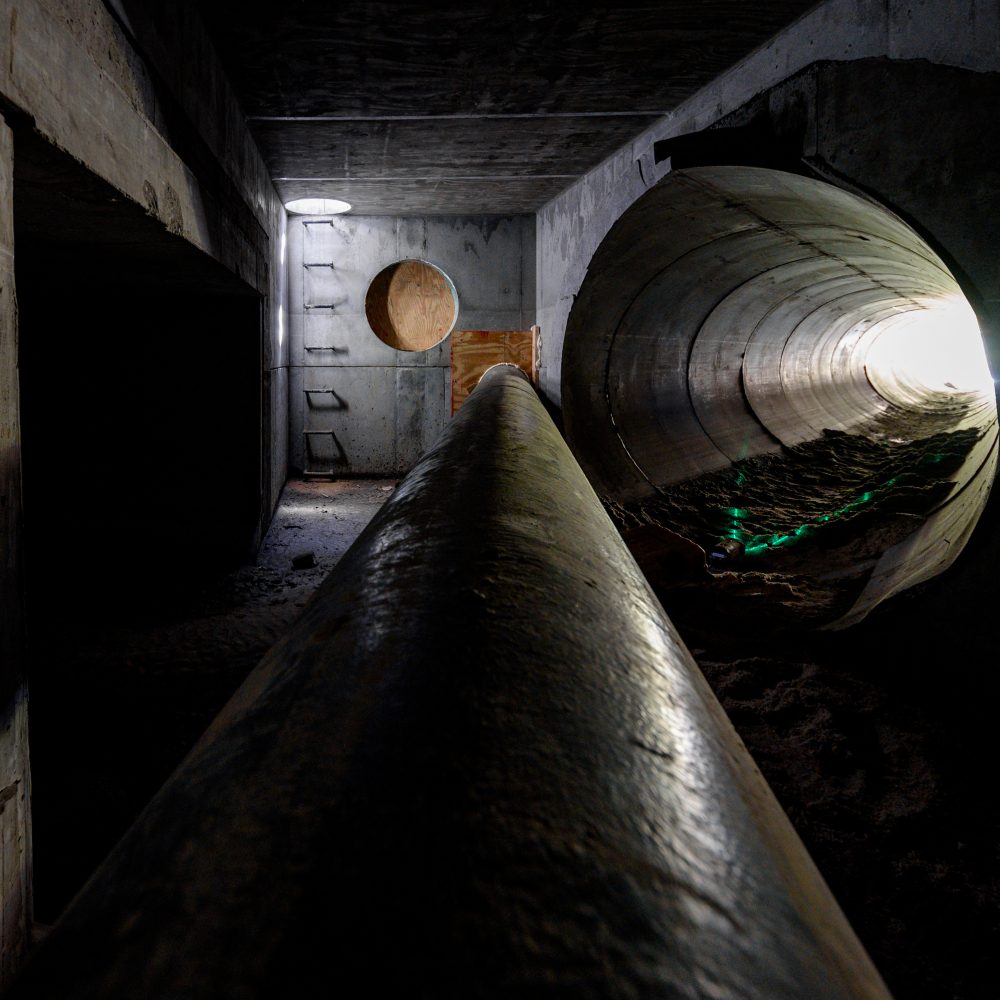
The box culvert has also allowed the contractor better control of unforeseen conditions that are common when constructing in historic cities. If unforeseen conditions are encountered in the field, the box culvert design has allowed for relatively quick and easy modifications. For example, in late 2018 workers came into contact with an unforeseen sanitary sewer line. Representatives at Oldcastle were contacted, and the resident engineer laid out the penetrations to determine that the culvert could be modified on site – a significant time and workflow savings.
Work on the Town Creek Culvert project has progressed on schedule and is expected to continue through the fall of 2020.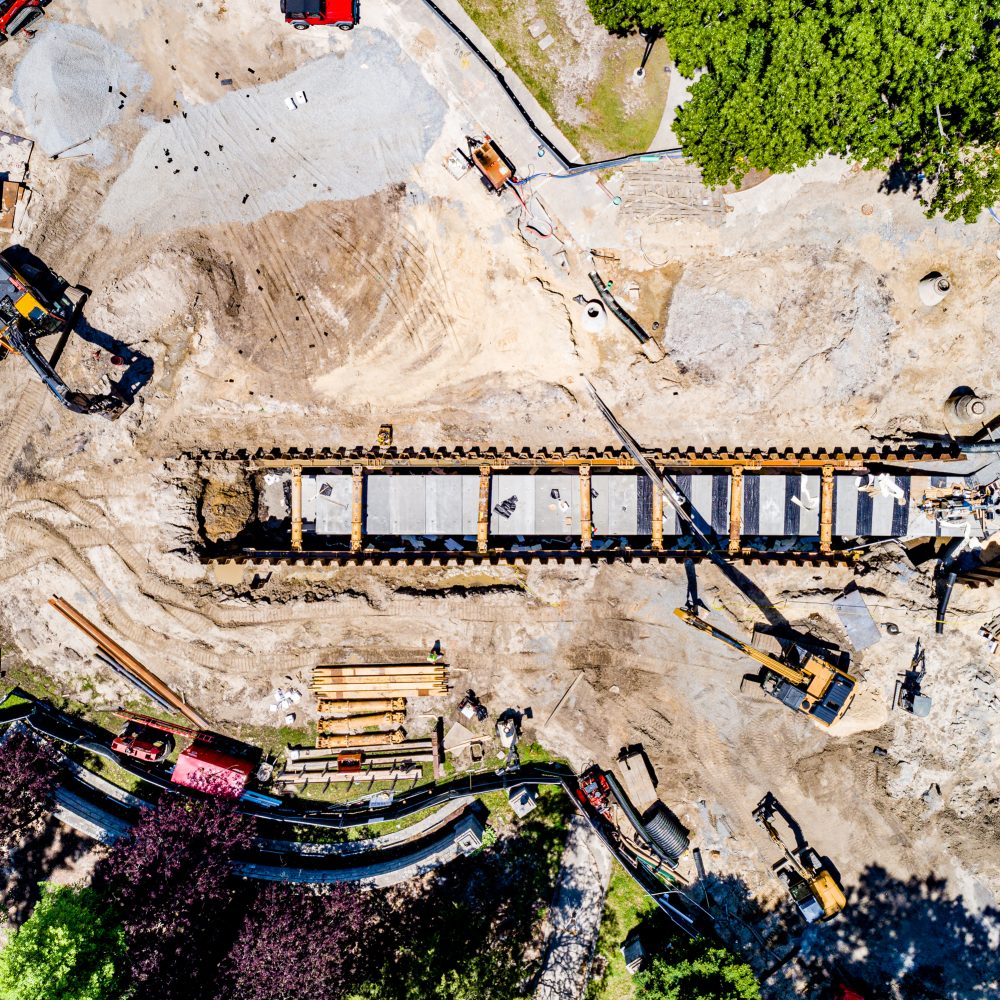
Engineer of Record: WK Dickson; Raleigh, N.C.
Stormwater Engineer: Kimley-Horn; Raleigh, N.C.
Inspection Engineer: Rivers and Associates; Greenville, N.C.
Contractor: Trader Construction; New Bern, N.C.
Precast Supplier: Oldcastle Infrastructure
By Curtis Carroll, Technical Support Manager/Field Installation Specialist, Oldcastle Infrastructure


